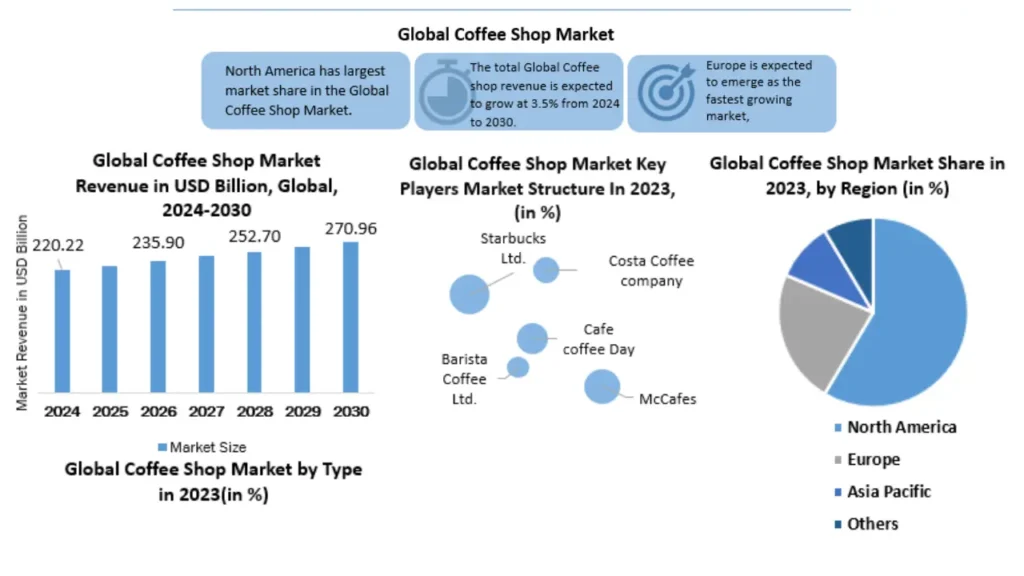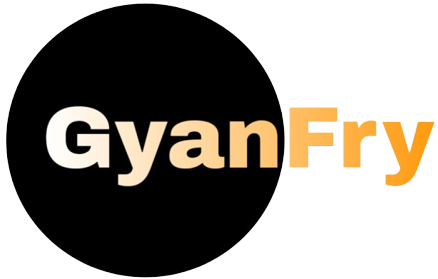Curiosity stirs within aspiring entrepreneurs and coffee enthusiasts alike, prompting questions that beg for answers. How do you carve your niche in a market inundated with coffee establishments? How to create the best Coffee Shop Business Plan?
What trends shape the landscape of the coffee industry today? Can a coffee shop be more than just a place for caffeine fixes, but a hub of creativity and connection? Read on.
From understanding consumer preferences to devising strategies for sustainable growth, this business plan serves as a roadmap for turning dreams of owning a coffee shop into a reality.
Whether you’re a budding entrepreneur seeking guidance or a coffee aficionado hungry for industry knowledge, this strong business plan is a roadmap for your successful business.
1. Coffee Shop Market Analysis:

Industry Overview:
- The global coffee shop market is dominated by the United States, China, Japan, and the United Kingdom.
- Market growth rates: The global coffee shop market is growing at a CAGR of 3.7%, while the US market is growing at 2.5% CAGR from 2023 to 2029, and the Chinese market at 8.9% during the same period.
Key Players:
- Major players include Starbucks, Dunkin’ Brands, McDonald’s, and Costa Coffee.
- These companies expand in emerging markets and introduce new products to meet consumer needs.
Challenges and Opportunities:
- Challenges: Rising coffee bean costs and competition from other food and beverage outlets.
- Opportunities: Continued growth due to strong consumer demand.
Consumer Insights:
- Coffee is consumed globally with 2.6 billion cups daily.
- Preferences: Creamers, flavored beans, and syrups are popular.
- Consumption Locations: At home, outside, and at work.
- Motivations: Taste, alertness, and habit.
- Concerns: Sustainability, but limited interest in lab-grown coffee.
- Trend Groups: “Trend seekers”, “ordinary pragmatists”, and “gift givers”.
- Interest in: Organic, shade-grown, and fair-traded products.
Understanding these market dynamics will help your strategies for positioning and marketing Brew Haven within the competitive landscape.
2. Coffee Shop Business Concept:
Just Question Yourself, What are you selling and why is it valuable? Clearly define your business idea into this coffee shop business plan, the type of shop you’ll run, and the value proposition for your customers. Why should someone choose you? To keep things easy, we’ve outlined a few popular coffee shop business concepts that works –
Concept 1: Themed Coffee Shop – Let’s say Cat cafe (where mostly cat lovers will come), board game cafe, art gallery cafe featuring local artists, minimalist zen cafe or coffee shop for pet lovers.
Target Market: People who prefer a unique atmosphere that caters to a specific interest, such as these people can be dog lover or just peace lover.
Concept 2: Specialized Coffee – Some coffee shops sells luxury and not just coffee. For the purpose, they may sell high-quality, single-origin beans, pour-over brewing techniques, or
Target Market: High net worth individuals or coffee connoisseurs who appreciate the finer details of a well-crafted cup.
Concept 3: Eco-Conscious Coffee Shop – Sustainable practices like fair-trade beans, biodegradable packaging, reusable cup discounts, and energy-efficient appliances are often admired and loved by some coffee lovers.
Target Market: Eco-friendly consumers who value and feel excited about ethical sourcing and environmental responsibility.
Concept 4: Multi-Functional Coffee Shop – Coffee shop with a co-working space for remote work, a bookstore to browse while you sip, or a venue for local musicians and open mic nights.
Target Market: Cater to a wider range of customer needs, creating a community hub with extended functionality.
Concept 5: Mobile Coffee Shop – these types of businesses want to reach customers on the go with a food truck or kiosk offering coffee, pastries, and convenient grab-and-go options.
Target Market: Busy professionals, students, and patrons at events or locations with high foot traffic.
Given the fierce competition and the fact that a typical cup of coffee alone may not drive sales, it’s advisable to focus on selling an experience rather than just a product in your shop. Therefore, the first step is to select our Coffee Shop Business Concept. Once that’s finalized, we can proceed directly to the financial aspects.
3. Competition:
Given the rise in the demand of coffee, many small and big players have entered this brewing niche. Result? Competition is fierce in some places. Therefore, we ought to be a savvy entrepreneurs and identify who’s a more serious competitor. We can break it down this way –
Depending on the concept you choose for coffee shop business plan, you will spot direct and indirect competitors like this.
Direct Competitors
- Physical Locations: Any established coffee shops in your area, especially those within walking distance are direct competitor of your business.
- Online Presence: Search for coffee shops in your area using Google Maps or social media platforms. Any website that shows first on the relevant terms you want your website to rank for is a direct competitor.
Indirect Competitors:
- Convenience Stores: Many convenience stores offer brewed coffee and grab-and-go options.
- Fast-Food Restaurants: Chains with McCafes or similar offerings cater to customers seeking a quick coffee fix.
- Grocery Stores: In-house cafes and bean sales may compete for customers who brew coffee at home.
Compared to indirect competitors, direct competitors pose risk to newbies.
So, direct competitors are spotted, you may ask. Now What? Obviously, we are still into the race. But we need to be very careful now because they can steal your prospective customers. All you should do now, analyse them carefully. We’ve it discussed next in simple words.
How to Analyze Direct Competitors?
- Products & Services: What coffee, food, and beverages do they offer? Do they have unique offerings you can’t match? Find it.
- Pricing: How do their prices compare to yours? Are they targeting a budget-conscious or premium market? Figure it out.
- Ambiance & Customer Experience: What’s the vibe of their shop? Do they focus on fast service, a comfortable atmosphere, or a work-friendly space? Consider it.
- Strengths & Weaknesses: Identify their strong points (e.g., excellent customer service, loyalty program) and any weaknesses you can exploit (e.g., limited menu, long wait times). Spot the gap and discover opportunities for yourself.
4. Financial Projections:
Suppose we are starting a Coffee shop business plan from scratch, here’s an outline of the inventory, assets and all equipment cost which will be added to the overall investment on business.
- Equipment: Espresso machine, grinder, brewing equipment, etc. Estimate $20,000.
- Inventory: Initial stock of coffee beans, milk, syrups, pastries, etc. Estimate $5,000.
- Marketing: Website development, signage, promotional materials, etc. Estimate $3,000.
- Operational Needs: Rent deposit, utilities, licenses, permits, etc. Estimate $10,000.
If we combine all these things, so the total Total Startup Cost is : $38,000.
Financial Forecasts:
Revenue Projection: Assuming an average price of $5 per cup of coffee and estimating 50 cups sold per day initially on a single coffee shop.
- Daily Revenue: 50 cups * $5 = $250.
- Monthly Revenue: $250 * 30 days = $7,500.
Expenses Projection: Including cost of goods sold (COGS), rent, utilities, wages, marketing, and other overheads.
- COGS: Assuming 30% of revenue ($2 per cup) = $1,500 per month.
- Rent: Estimated at $2,000 per month.
- Utilities: Estimated at $500 per month.
- Wages: One full-time barista at $15 per hour, 8 hours per day, 6 days a week = $2,160 per month.
- Marketing: Estimated at $500 per month.
- Other Overheads: Estimated at $1,000 per month.
- Total Monthly Expenses: $7,660.
Profit Projection: Revenue minus expenses.
Monthly Profit: $7,500 – $7,660 = -$160.
Note: Initial projections may indicate a loss due to high startup costs and lower initial sales volume. Adjustments may be necessary as the business ramps up and gains traction in the market.
.Now, assume your business grows. Your losses are likely convert into profits. Here’s how
Revenue Projection:
- Assuming an average price of $5 per cup of coffee and estimating 75 cups sold per day initially.
- Daily Revenue: 75 cups * $5 = $375.
- Monthly Revenue: $375 * 30 days = $11,250.
Expenses Projection:
- Cost of Goods Sold (COGS): Assuming 30% of revenue ($1.50 per cup) = $1,125 per month.
- Rent: Estimated at $2,000 per month.
- Utilities: Estimated at $500 per month.
- Wages: One full-time barista at $15 per hour, 8 hours per day, 6 days a week = $2,160 per month.
- Marketing: Estimated at $500 per month.
- Other Overheads: Estimated at $1,000 per month.
- Total Monthly Expenses: $7,285.
Profit Projection:
- Monthly Profit: Revenue – Expenses.
- $11,250 – $7,285 = $3,965
Note: By increasing the projected daily sales volume to 75 cups, the monthly profit is expected to improve significantly. This adjustment reflects a more optimistic outlook on the business’s performance, but it’s essential to monitor actual sales closely and adjust projections accordingly as the business progresses.
5. Operations and Management:
We have come a long way on our coffee shop business plan, and now we need to specifically focusing on the core business functions. The “Operation” and “Management”, if you don’t want a happy customer to never make a come back, consider these few things.
In Coffee shop business plan, we need to consider factors like business processes which tells how our business will work, the production methods which tells how coffee will be served, and service delivery.
#1 Business Processes:
- Order Taking: Customers will place orders either at the counter or through a mobile app for pickup.
- Beverage Preparation: You can say that our skilled baristas will prepare coffee beverages using high-quality beans, precise brewing methods, and attention to detail.
- Quality Control: You can implement rigorous quality control measures to ensure consistency in taste, presentation, and customer satisfaction.
- Inventory Management: Regular inventory checks should be conducted to ensure sufficient stock of coffee beans, milk, syrups, and other ingredients.
- Customer Service: Friendly and efficient service will be provided at all times, with a focus on addressing customer needs promptly and courteously.
#2 Production Methods:
- Espresso-Based Beverages: The most popular coffee type Espresso shots will be extracted using a commercial espresso machine, you can mention something like this.
- Brewing Methods: Drip coffee and pour-over coffee will be prepared using high-quality coffee grounds and filtered water in your coffee shop business plan.
- Specialty Drinks: The menu will include a variety of specialty drinks such as cold brew, iced lattes, and seasonal offerings, each prepared with care and attention to detail.
#3 Service Delivery:
- In-Store Experience: Customers would enjoy a cozy and inviting atmosphere while sipping their coffee and indulging in freshly baked pastries or light snacks.
- Takeaway Orders: For customers on-the-go, you may offer convenient takeaway options with efficient packaging to maintain beverage quality.
- Online Ordering: A user-friendly mobile app will enable customers to place orders for pickup, minimizing wait times and enhancing convenience.
6. Marketing and Sales Strategy:
We don’t want to stop on this coffee shop business plan, rather we aspire to grow. Therefore, we ought to actively scout for ways to market our coffee shop. Here’s how to do that –
Target Market Identification:
- Identify and segment the target market based on demographics, preferences, and behavior.
- Tailor marketing strategies to appeal to different customer segments, such as urban professionals, students, and coffee enthusiasts.
Brand Building:
- Develop a strong brand identity that reflects brand values, atmosphere, and commitment to quality.
- Utilize consistent branding across all marketing channels, including logo, colors, and messaging.
Also Read: – 150+ Coffee Shop Name Ideas [Never Heard Before]
Customer Acquisition Strategies:
- Social Media Marketing: Engage with customers on platforms like Instagram, Facebook, and Twitter to showcase our coffee offerings, share behind-the-scenes content, and interact with the community.
- Local Partnerships: Collaborate with nearby businesses, offices, and universities to promote your coffee shop and attract new customers through cross-promotional events and discounts.
- Loyalty Programs: Implement a loyalty program to reward frequent customers and encourage repeat visits, it should be a part of your coffee shop business plan
- Community Engagement: Participate in local events, sponsorships, and fundraisers to build brand awareness and connect with the community.
Lead Generation:
- Online Presence: Maintain an informative and visually appealing website with online ordering capabilities, menu details, and location information to attract potential customers.
- Content Marketing: Create blog posts, videos, and other content related to coffee culture, brewing tips, and behind-the-scenes stories to attract and engage coffee enthusiasts.
- Email Marketing: Build an email list of customers and prospects to share updates, promotions, and special offers, driving traffic to the coffee shop.
Sales Strategy:
- In-Store Sales: Offer a welcoming and inviting atmosphere for customers to enjoy their coffee and make purchases in-store.
- Online Ordering: Provide a user-friendly mobile app and website for customers to place orders for pickup or delivery, enhancing convenience and accessibility.
- Direct Sales: Train staff to engage with customers, upsell additional products, and provide personalized recommendations to enhance the overall customer experience.
Pricing Strategy:
- Competitive Pricing: Set prices for coffee beverages and other products based on market research, competitor analysis, and perceived value.
- Value Proposition: Emphasize Brew Haven’s commitment to quality, sustainability, and community involvement to justify pricing and differentiate from competitors.
- Seasonal Promotions: Offer seasonal specials, discounts, and loyalty rewards to attract new customers and drive sales during slower periods.
By implementing these marketing and sales strategies, a coffee shop business plan aims to establish a strong presence in the local community, attract a loyal customer base, and drive sustainable growth and profitability over time.
SWOT Analysis:
Conduct a SWOT analysis of your coffee shop business plan to identify your business’s Strengths, Weaknesses, Opportunities, and Threats. This will help you capitalize on advantages, address weaknesses, and prepare for challenges.
Hey! Contribute to this Coffee Shop Business Plan. Drop Your Opinion in the [Comment Box] Thanks!









Hi, great article